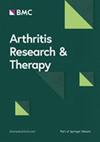分析原发性 Sjogren 综合征患者肾小管酸中毒的风险因素并建立提名图预测模型
IF 4.9
2区 医学
Q1 Medicine
引用次数: 0
摘要
研究原发性斯约格伦综合征(pSS)患者发生肾小管酸中毒(RTA)的危险因素,并建立预测pSS-RTA患者的个性化提名图。本研究回顾性收集并分析了2012年1月至2024年1月期间在我院接受住院治疗的99名pSS患者的数据。采用 Bootstrap 重采样技术、单因素和多因素逻辑回归分析来探讨 pSS-RTA 的风险因素。根据多变量逻辑模型的结果建立了一个提名图。通过接收者操作特征曲线、C-指数、校准曲线和决策曲线分析对模型进行了评估。此外,我们还对 pSS-RTA 患者的严重程度进行了分级,并使用单变量分析评估了 pSS-RTA 严重程度与风险因素之间的关系。多变量逻辑回归分析显示,并发甲状腺疾病、症状持续时间长、主观口干和 RF 阳性是 pSS-RTA 患者的独立风险因素。在此基础上,建立了个性化的提名图预测模型。经 Hosmer-Lemeshow 检验,该模型的拟合度为 0.657。训练组和验证组的 AUC 值分别为 0.912 和 0.896,表明提名图具有很强的判别能力。训练组和验证组的校准曲线紧贴斜率为 1 的对角线,证明该模型具有可靠的预测能力。此外,决策曲线分析表明,提名图模型在预测 pSS-RTA 方面有净获益,强调了其临床价值。我们建立了一个预测pSS患者RTA发生的提名图,相信它能为早期识别和干预高危pSS患者奠定基础。- 患有甲状腺疾病、症状持续时间长、主观口干、类风湿因子(RF)检测阳性是 pSS-RTA 患者的独立危险因素。- 根据提名图,可以确定 pSS-RTA 患者的概率。- 多中心研究和纳入更多量化指标可能会产生更好的预测模型。本文章由计算机程序翻译,如有差异,请以英文原文为准。
Analysis of risk factors and development of a nomogram prediction model for renal tubular acidosis in primary Sjogren syndrome patients
To investigate the risk factors of renal tubular acidosis (RTA) in patients with primary Sjögren’s syndrome (pSS) and create a personalized nomogram for predicting pSS-RTA patients. Data from 99 pSS patients who underwent inpatient treatment at our hospital from January 2012 to January 2024 were retrospectively collected and analyzed. Bootstrap resampling technique, single-factor, and multi-factor logistic regression analyses were used to explore the risk factors for pSS-RTA. A nomogram was developed based on the results of the multivariate logistic model. The model was evaluated through receiver operating characteristic curve, C-index, calibration curve, and decision curve analysis. In addition, we graded the severity of pSS-RTA patients and used univariate analysis to assess the relationship between pSS-RTA severity and risk factors. A multivariate logistic regression analysis revealed that concurrent thyroid disease, long symptom duration, subjective dry mouth, and positive RF were independent risk factors for pSS-RTA patients. Based on them, a personalized nomogram predictive model was established. With a p-value of 0.657 from the Hosmer-Lemeshow test, the model demonstrated a good fit. The AUC values in the training and validation groups were 0.912 and 0.896, indicating a strong discriminative power of the nomogram. The calibration curves for the training and validation groups closely followed the diagonal line with a slope of 1, confirming the model’s reliable predictive ability. Furthermore, the decision curve analysis showed that the nomogram model had a net benefit in predicting pSS-RTA, emphasizing its clinical value.This study did not find an association between the severity of pSS-RTA and risk factors. We developed a nomogram to predict RTA occurrence in pSS patients, and it is believed to provide a foundation for early identification and intervention for high-risk pSS patients. • Having thyroid disease, experiencing prolonged symptoms, reporting subjective dry mouth, and testing positive for rheumatoid factor (RF) were independent risk factors for pSS-RTA patients. • According to the nomogram, the probability of pSS-RTA patients can be identified. • Multi-centre studies and the inclusion of more quantitative indicators may lead to better predictive models.
求助全文
通过发布文献求助,成功后即可免费获取论文全文。
去求助
来源期刊

Arthritis Research & Therapy
RHEUMATOLOGY-
CiteScore
8.60
自引率
2.00%
发文量
261
审稿时长
14 weeks
期刊介绍:
Established in 1999, Arthritis Research and Therapy is an international, open access, peer-reviewed journal, publishing original articles in the area of musculoskeletal research and therapy as well as, reviews, commentaries and reports. A major focus of the journal is on the immunologic processes leading to inflammation, damage and repair as they relate to autoimmune rheumatic and musculoskeletal conditions, and which inform the translation of this knowledge into advances in clinical care. Original basic, translational and clinical research is considered for publication along with results of early and late phase therapeutic trials, especially as they pertain to the underpinning science that informs clinical observations in interventional studies.
 求助内容:
求助内容: 应助结果提醒方式:
应助结果提醒方式:


